Turbine Dreams
The basics of stepping up

Ownership
In many ways jet or turboprop ownership is the same as piston ownership—just with more zeros. There’s insurance, hangar rent (or ground lease), fuel, and maintenance. But two key differences separate turbine ownership from piston ownership.
Given a turbine’s more complicated aircraft systems and higher price tag, maintenance is a big consideration. Turbine engines are hundreds of thousands or even millions of dollars, and every time a maintenance technician touches the aircraft, the bill will be high. To offset some of the sting, all engine manufacturers and at least one independent company offer engine programs. These per-hour maintenance products are essentially insurance for the owner’s maintenance costs. Programs vary, and they can cover scheduled maintenance, unscheduled maintenance, engines only, or the entire airplane. What you chose to cover is up to you—or in the case of a financed aircraft, your lender.
While some of these programs are expensive on a per-hour basis, they also have been shown to increase the market value of the aircraft. A jet without an engine program commands less on the market than a comparable aircraft with a program.
Maintenance is also a concern when traveling. Have a spark plug problem and you’re bound to find a mechanic at almost every airport in the country. But if your PT6 develops an issue at a remote airport, your chance of finding a qualified mechanic is virtually nil. The specialized training and equipment necessary to service a turbine aren’t as widespread as they are in the piston world.
That’s why most manufacturers provide robust AOG service (aircraft on ground, also known as broken down). A phone call is all it takes to get technical support or to dispatch a technician to your location.
Turbine aircraft often are on phase inspection programs, as well. Instead of a massive annual that has the aircraft down for weeks, the jet or turboprop will undergo periodic inspections that go section by section through the aircraft. This can reduce downtime and expenses.
The other major consideration of turbine ownership is training. A piston owner may get away with an hour of instrument work every six months, but a turbine aircraft owner must complete much more stringent training.
Menu of upgrades
Three new turboprops and three jets to consider stepping up to:
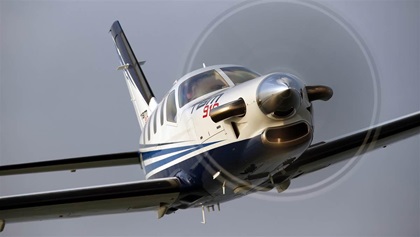
TBM 910/930
Speed king
Ask a group of pilots for their winning-lottery-ticket airplane and a good number will tell you the TBM 910/930. This Daher-built turboprop is designed for the owner-pilot who wants to fly himself somewhere, do it comfortably and in style, and for less money than a jet. The current lineup includes two models, both with Garmin panels. In fact, the airplanes are identical except for the panel—the 910 features the G1000 and the 930 sports the G3000. Of particular note for those looking for even more comfort, owners can now get a fully enclosed lav as an option. Unfortunately, you—the owner-pilot—will have to service it. There are some advantages to a crewed airplane.
SPEC SHEET
$3.9 million (910), $4.2 million (930)
High speed cruise | 330 kt
Cost per mile | $2.08
Seats | 6
Balanced field length | 2,380 ft
Panel | G1000 (910), G3000 (930)
Engine | Pratt & Whitney PT6A-66D, rated at 850 shp
Three jet options worthy of a look
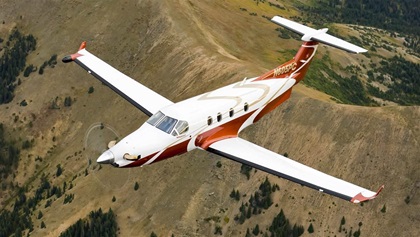
Pilatus PC–12
Heavy hauler
There is just something cool about the PC–12. Its go-anywhere, do-anything capability comes wrapped in some pretty good looks and seriously impressive ramp presence. The PC–12 is not going to set any speed records, but if you’re an outdoor enthusiast or haul equipment for your job, the extra room will come in handy. The PC–12 is a comfortable ride for passengers, which can more than make up for its speed deficiency.
SPEC SHEET
$4.9 million
High speed cruise | 285 kt
Cost per mile | $2.60
Seats | 8-11
Takeoff distance over a 50-foot obstacle | 2,602 ft
Panel | Honeywell Apex
Engine | Pratt & Whitney PT6A-67P, rated at 1,200 shp

Piper M600
Budget buy
With more range and more speed, Piper has brought a turboprop to the competition that now bears serious consideration. The M600 is more than a million dollars less than the TBM 930. Although you’ll sacrifice speed and range, on the shorter regional trips most pilots fly you’ll keep pace with the French speedster and do it less expensively.
SPEC SHEET
$3 million
High speed cruise | 274 kt
Cost per mile | $1.96
Seats | 6
Takeoff distance over a 50-foot obstacle | 2,635 ft
Panel | Garmin G3000
Engine | Pratt & Whitney PT6A-42A, rated at 600 shp
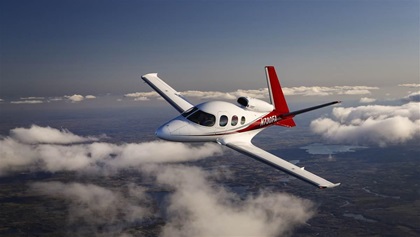
Cirrus SF50
Single-engine wunderjet
Cirrus has pulled off an amazing feat with the SF50. This single-engine jet finally brings the promise of low-cost, simple jet operation to the masses. It is likely to be the easiest step up for many pilots, with its familiar panel layout, similar approach speeds, and good runway performance. It’s no wonder that hundreds of Cirrus SR22 owners have flocked to the jet. Piston owners looking for an airplane that can fly higher and faster than their avgas burner should consider the Cirrus.
SPEC SHEET
$1.96 million
High speed cruise | 300 kt
Cost per mile | $2.21
Seats | 7
Takeoff over a 50-foot obstacle | 3,192 ft
Panel | Cirrus Perspective by Garmin
Engine | Williams FJ33-5A, rated at 1,800 lbst
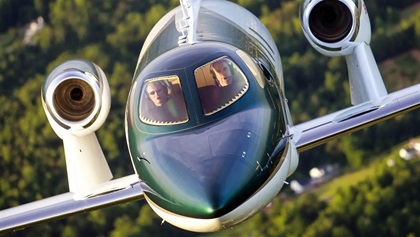
Honda HA–420
Efficiency champ
It may have taken too long to come to market, and we’ve heard reports of some teething problems, but the fact remains that the Hondajet is a revolutionary aircraft that operates with impressive efficiency. The jet is perfectly on brand for Honda. It’s not the most luxurious jet on the market, and it’s not the cheapest, but in terms of speed and performance for the money, it is a hands-down winner. Plus, it looks good.
SPEC SHEET
$5 million
High speed cruise | 422 kt
Cost per mile | $2.70
Seats | 6-7
Takeoff distance | 4,000 ft
Panel | Garmin G1000
Engines | (2) GE Honda Aero HF120, rated at 2,095 lbst each
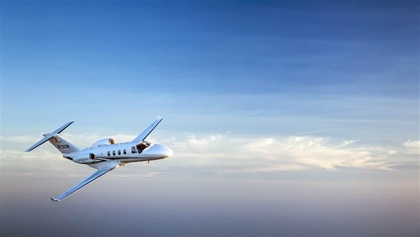
Cessna Citation M2
The classic option
The Citation line of jets is the most prolific in the world, and the M2 is now the beginning of that product line. Thus stepping into an M2 is the training for stepping into every other Citation in production. The M2 is a significantly better airplane than the Mustang it killed, and a worthy successor to the loved CJ1 and CJ1+. Like other Citations, the M2 will not completely impress on paper. The Embraer Phenom 100 beats it on speed, cost, and efficiency. Not everything is sold on book numbers.
SPEC SHEET
$4.5 million
High speed cruise | 404 kt
Cost per mile | $3.45
Seats | 7
Balanced field length | 3,210 ft
Panel | Garmin G3000
Engines | (2) Williams FJ44-1AP-21, rated at 1,965 lbst each
Training
To a piston owner stepping up, a turbine aircraft is often mysterious. It’s an entirely different engine, operating environment, speed, and slew of aircraft systems. Yet the mechanics of how they fly—especially for straight-wing jets that occupy most of the single-pilot world—are virtually the same. It may seem obvious, but the skills you learned in primary training will apply to flying a turbine as well.
The amount of training and how it is structured is unique to the turbine environment. For aircraft that require a type rating, most pilots will go to a simulator center. There you’ll learn to fly by rigid procedures designed both by the manufacturer and the simulator center instructors. There’s a lot of rote memorization of normal, abnormal, and emergency procedures. The training progresses from sitting in a classroom, to sitting in front of a cockpit poster in order to reinforce flows and procedures, to simulator sessions. Even though simulator training might look like traditional flight training, it is more of an evaluation and aircraft transition process. One thing you won’t receive at a simulator center is remedial training in instrument flying—a fundamental skill needed to fly turbine aircraft. Don’t be afraid to seek additional training.
Jeffrey Moss was the 2010 FAA CFI of the year, and he has developed a robust business teaching people to fly jets, both in the initial stages and during the mentoring period. “You have to know how to fly real instruments,” he said. “You have to have a good IFR workflow, and know how to fly an approach from the final approach fix.” Almost all instrument pilots can file direct and shoot a visual approach. But throw in a full route clearance, an approach to minimums, and a true missed approach and Moss said some pilots fall apart. “Most of this training can be done with a good CFII.”
Once the pilot has solid instrument skills, Moss said it comes down to the panel and its nuances. If the turbine you aspire to has a Garmin, for example, get proficient in the Garmin before stepping up. Moss said this can be done in a piston, as can checklist discipline, another important skill. Those checklist, instrument, and avionics skills transfer to faster, more capable aircraft.
Once the pilot has earned the type rating, usually at a simulator center but occasionally in the airplane, in most cases the insurance company will require a mentorship period. All too often the owner picks a buddy who has experience in the jet and they go fly around for 25 hours. That’s a wasted training opportunity. A professional mentor pilot will extend the simulator training to focus on real-world operations, something not covered in the type rating courses.
Moss has an approved mentor syllabus that usually lasts six days. In that time the owner will fly across the country, focusing mostly on busy airports where he or she will be issued arrival and departure procedures that all turbine pilots must be comfortable handling. Unlike piston departures that usually just call for heading to a fix before being cleared as filed, a turbine arrival or departure generally calls for multiple step-downs or climb segments, often with speed restrictions. Because of that, Moss will spend two or three days focusing on vertical navigation (VNAV), a critical and sometimes maddening autopilot function. He also drills the basics, such as short-field and crosswind landing techniques.
One of Moss’s signature elements of the mentoring syllabus is that he sits in the back. Part of being a good pilot in command is the ability to exercise judgment with weather, air traffic control, and other safety items. By sitting in the back he encourages the student to make as many of the decisions as possible.
Safety
The back-to-basics training approach is grounded in data. Looking at the history of single-pilot turboprop and jet accidents, the vast majority can be attributed to pilot error at the most basic levels.
At the turboprop level, a surprising number of problems are related to basic instrument flying. AOPA analyzed single-pilot turbine accidents between 2005 and 2014 and found that in turboprops, 20 percent of the fatal accidents were because of poor instrument flying skills. Takeoffs and landings were also problematic. Landing mishaps accounted for a quarter of all accidents during the 10-year period. There were also 21 takeoff accidents, 11 of which were fatal. In all, there were 82 fatal accidents in single-pilot turboprop aircraft between 2005 and 2014, and 220 total accidents.
Single-pilot jet operators were safer than turboprop pilots, but the problems were no less basic. Landing accidents, especially overruns, were a persistent problem. Of the 35 single-pilot jet accidents during the period, 15 occurred during landing, by far the biggest portion. Of those 15 accidents, 80 percent were overruns, indicating that single-pilot jet pilots could use some basic instruction in speed control, evaluating runway conditions, and adherence to book specifications.
So, is flying a turbine aircraft safer than flying a piston, and is flying one single-pilot as safe as flying with a crew? The answer to the former is unquestionably yes. The turboprop accident rate was 1.54 per 100,000 hours during the period, while the jet rate was 0.51 per 100,000 hours. For comparison, the overall fixed-wing rate was well more than 4 per 100,000.
The question of whether single-pilot flying is as safe as a crew environment is more complicated. Single-pilot activity isn’t tracked as closely as overall activity, so the accident rate is hard to gather. Aviation International News published an analysis in 2015 that indicated virtually no difference in the safety record between single-pilot and two-crew aircraft. Obviously the biggest risk factor of any airplane is the pilot, and the pilot’s decisions and skills go further than any other factor in determining whether the flight will end safely.
Moss said he’s taken two pilots from very low time to type rated in less than 150 hours. With that record of success, it should bolster any pilot’s confidence that stepping up to a turbine simply takes time, the right training, and a healthy checkbook.
Email [email protected]



